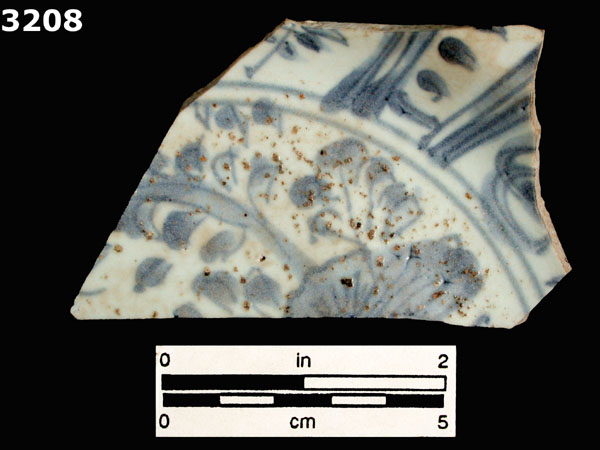View all examples of PORCELAIN, KRAAK

| Type Name: | PORCELAIN, KRAAK |
| Type Index: | PORCELAIN |
| Production Origin: | CHINA |
| Date Range: | 1550-1644 |
| Defining Attributes: |
White, vitreous paste that is smooth and translucent, but with occasional pitting and imperfections caused by impurities in the clay. The background glaze has a bluish tint and a glossy finish. It is sometimes irregular, and is subject to pinholing and chipping around the rim edges. Decoration is executed in underglaze blue paint, ranging from a pale silvery blue to a dark indigo blue. Elements are painted in outline, and filled with a lighter-colored blue wash of paint. Designs are arranged formally in panels around the rim and marlies of plates, separated by straight or scalloped lines. A central medallion design is in the center of plates. Motifs include flowers, fruit birds, Taoist symbols and landscape scenes. The reverses of plates often have arches of small floral designs in panels. Vessels may have kiln sand adhering to them, particularly on the base of foot rings. Foot rings are found on nearly all vessels. |
| Vessel Forms: |
BOWL CUP PLATE SAUCER |
| Comments: | Kraak porcelain was produced primarily for export, and was shipped to Europe in great quantities by Portuguese and Dutch traders. A subset of Ming porcelain, it is distinguished from non-Kraak Ming wares by it’s poorer quality of glaze and firing, its variance in color from the rich cobalt blue typical of Ming porcelain, and it’s arrangement of designs in panels around the cavetto. Specific chronological subdivisions based on design can be found in Pijl-Ketel 1982 and McElney 1979. |
| Published Definitions: | Kuwayama 1997; McElney 1979; Pijl-Ketel 1982, Rinaldi 1989 |